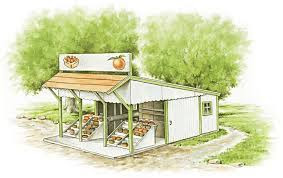Lesson Plan: A Roadside Stand by Robert Frost
General Information
·
Subject:
English Core
·
Class: XII
·
Poem: A
Roadside Stand
·
Poet:
Robert Frost
·
Board: CBSE
·
Duration:
40–45 minutes
1. Learning Objectives
By the end of this lesson, students will be able to:
·
Understand and explain the central theme and message
of the poem.
·
Identify and appreciate the poetic devices used.
·
Analyze the social commentary presented by the
poet.
·
Interpret the poem’s tone, mood, and narrative
voice.
·
Enhance vocabulary through contextual reading
·
Recognize and apply related grammar concepts such
as reported speech and prepositions.
·
Improve listening, speaking, reading, and writing skills
through integrated activities.
2. Teaching-Learning
Materials (TLM)
·
Textbook (Flamingo – Class XII)
·
Audio recording of the poem (for listening activity)
·
PowerPoint slides (for summary, theme, and poetic
devices)
·
Chart paper and markers
·
Images of roadside stands and rural life
·
Whiteboard and markers
3. Central Idea
The poem portrays the disparity between urban and rural
life. It sheds light on the neglect and exploitation of rural people,
emphasizing their hopes and disillusionment as they wait for economic upliftment
from the affluent city dwellers. The poet expresses sympathy and concern for
their plight and critiques false political promises.
4. Summary of the Poem
“A Roadside Stand” is a narrative poem
in which Robert Frost highlights the sadness and helplessness of rural
people. A poor farmer sets up a roadside stand hoping city folks will buy his
goods. However, the vehicles pass by without stopping, and the rural people are
disappointed. Frost criticizes how the government and elite classes exploit
the poor under the guise of development. The poet uses irony and pathos
to expose rural hardship and seeks social justice.
5. Themes
·
Rural vs. urban divide
·
Economic disparity and poverty
·
False political promises
·
Human suffering and social injustice
·
Longing for dignity and self-reliance
6. Poetic Devices
|
Device |
Example |
Effect |
|
Imagery |
"wild berries in wooden quarts" |
Creates a vivid rural setting |
|
Irony |
"The polished traffic passed with a mind
ahead" |
Highlights urban apathy |
|
Alliteration |
"Greedy good-doers" |
Emphasizes hypocrisy of political helpers |
|
Enjambment |
Used throughout the poem |
Creates a natural, flowing rhythm |
|
Personification |
"The flower of cities" |
Gives human quality to cities |
|
Symbolism |
The roadside stand represents rural hope and
desperation |
Deepens the social message of the poem |
7. Grammar Focus
·
Reported speech:
Changing direct quotes from the poem into reported speech.
- Example:
“Will someone stop and buy?” → He wondered if someone would stop and buy.
·
Prepositions:
Extract prepositional phrases from the poem and explain usage.
- Example: “On
the north and south highway”
8. About the Poet:
Robert Frost
·
Nationality:
American
·
Born:
March 26, 1874
·
Died:
January 29, 1963
·
Known for his realistic depictions of rural life
and use of American colloquial speech
·
Famous poems: The Road Not Taken, Stopping by
Woods on a Snowy Evening, Mending Wall
·
Won the Pulitzer Prize four times
9. Methodology /
Teaching Strategy
·
Introduction (5 mins):
Brief background on Robert Frost and rural-urban divide.
·
Reading (10 mins): Loud
reading by teacher followed by student volunteers.
·
Explanation (10 mins):
Line-by-line explanation and discussion of key lines.
·
Discussion (10 mins):
Themes, symbols, and poetic devices with examples.
·
Activity (5 mins):
Group discussion or roleplay imagining the voice of the stand owner.
·
Recap & Q/A (5 mins):
Quick recap with questions to check understanding.
10. Assessment /
Evaluation
·
Oral questions based
on the poem’s theme and poetic devices
·
Worksheet with
fill-in-the-blanks, short answer questions, and grammar practice
·
Homework:
1.
Write a letter from the roadside vendor’s point of view
to a city newspaper
2.
Identify 3 poetic devices from the poem with examples

